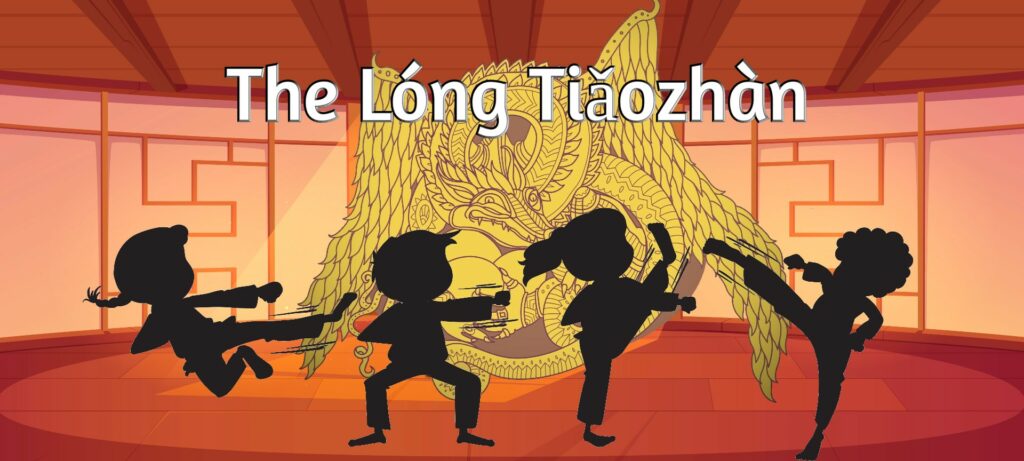Taking The Lóng Tiǎozhàn


The Lóng Tiǎozhàn was established very early on in the Dragon Order as a way of determining the worthiness of a Dragon Nestling to begin their training and to continue to the next level. Each temple can only accommodate 16 new nestlings per training season. However, most villages have a birth rate producing between 30-60 new children each year.
Serving as a Dragon and dedicating one’s life to the Order is considered the highest honor. In order to determine which children will be given that honor the original Dragons long ago established this tradition.
The Lóng Tiǎozhàn is not an easy test and requires years of practice and preparation. Typically children take the Lóng Tiǎozhàn for the first time when they turn eight years old.
Passing The Lóng Tiǎozhàn Means A Lifetime As A Dragon
After the tests are completed, the Dǎoshī Instructs the village to remain silent while he or she decides who the highest performing children are. This is a moment of great anticipation for both the children and their families. Those children who are accepted into the temple will be given great honor, while those who are not will return to their mundane lives in the village.
Once the winners are selected, the Dǎoshī calls each child by shouting their names, in order to awaken the Wyvern Spirits. The village then repeats these shouts. This helps to provide the child with extra blessings and protection from the Dragons of the past.
Dragon nestlings remain in the Temple for 16 grueling years. When they turn 24 years old and leave the Temple as fully realized Dragons where they are allowed to live in the village in normal housing. Dragons marry, have children, and engage in other normal behavior. The only difference is that rather than having an occupation relating to farming, or manufacturing, they instead serve at the will of the Dǎoshī. Who often uses them for missions. When they are not on a mission, they are expected to spend their productive hours each day practicing with their Xué.
Why Did Apollo Have To Pass The Lóng Tiǎozhàn As An Orange Poppy?
Apollo had to do much more than just pass the tests outlined above. He had to demonstrate his knowledge of the entire spectrum of forms studied throughout a child’s four years as a Blue Engrow. Shi Ju-Long insisted on this, because he felt it was important to make sure that Apollo was worthy of being trained. The other children his age were ready to become Orange Poppies, and Apollo would be an unbearable burden if he were not also already. It takes a Xué sixteen full years to develop in unison. If they had taken Apollo and if he were not at there level, it would set them back, making their Xué a hindrance to the Order, rather than a strength.
Its worth noting that during the Cùxiāo jié festival, at the beginning of each training season, the other children also demonstrate these same forms that Apollo did at the end of his first year. However, they are not being tested for admission into the Temple, since these children have already been admitted into the order. Instead, they are being tested to show that they are performing at the level they should be. If they fail a Lóng Tiǎozhàn after being admitted to the Temple, the consequences depend on which order they belong to. With the Black Dragons being far more harsh.
